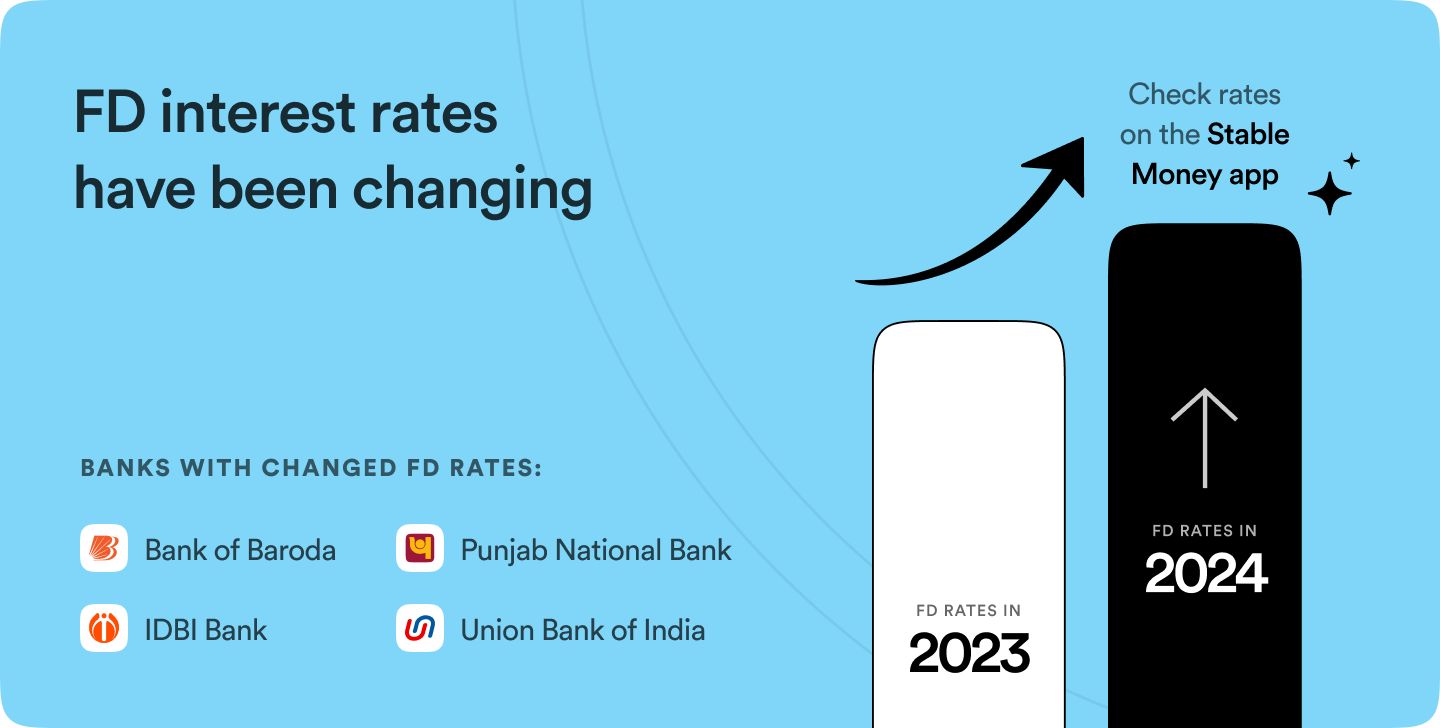You may have noticed a lot of banks shuffling their rates recently. Nothing strange about that, right? Not really. But if you look closely, most of them have raised shorter term rates, compared to longer terms.
This begs the question - why would they change rates differently for different tenures? Today, we will dive into why this has been happening.
Some context:
In recent months, there has been a noticeable increase in the demand for credit across various sectors. This surge is seen as a positive indicator for the economy, reflecting growing business activities, consumer spending, and investment opportunities. Consequently, banks have been increasing the amount of credit they give out, in the form of loans.
But why would this affect interest rates on deposits?
To understand this, we need to understand something called a credit deposit ratio (CDR). The credit deposit ratio is essentially the proportion of a bank's assets that are tied up in loans compared to the deposits it holds.
So, if a bank has a CDR of 50%, it means that for every ₹100 deposited with the bank by its customers, it gives out ₹50 in the form of loans.
A solid credit deposit ratio ensures that the bank has enough money at hand to meet its financial commitments while also facilitating economic growth through responsible lending. Hence, it serves as a major indicator of the stability of banks.
Banks usually try to maintain a CDR between 70%-75%, which is considered a reasonable range.
To keep their banking systems intact, many countries even have minimum and maximum limits on CDR imposed by their central banks.
While the RBI does not prescribe any minimum or maximum CDR for the banks, it monitors the ratio closely to ensure financial stability and economic growth. And especially in uncertain situations, the RBI maintains pressure on banks to keep their CDR under control.
The credit-deposit connection
With increasing credit, banks are scrambling to obtain more deposits to keep their CDR in control. But banking is a competitive market, and customers tend to prefer higher returns.
Keeping this in mind, many banks have made adjustments to their interest rates in an attempt to get more customers and balance their deposits better. These changes are intended to optimize the credit deposit ratio, ensuring that the bank can continue providing competitive and sustainable financial solutions to its customers.
But why are rates changing differently for different terms?
Customers have recently been moving away from the usual current accounts and salary accounts (CASA) in favour of higher return instruments, like FDs and Mutual Funds. This has considerably reduced the short-term deposits that banks had access to.
Additionally, these CASA accounts served as cheap deposits for banks, with their minimal returns to customers. Reduced deposits in CASA has raised the cost of capital for banks, since they now need to depend on longer term deposits, on which they give higher returns.
To balance out their availability of long-term and short-term deposits, and bring their costs under control, many banks have been adjusting their rates. This is more visible for shorter term deposits, which banks have a desperate need for. In fact, some banks have left their longer-term rates unchanged, while raising short-term rates.
If you have noticed changes in the rates associated with your accounts, loans, or other financial products, it's likely a reflection of this broader strategy. These adjustments are made with careful consideration, and banks strive to strike a balance that benefits both the institution and its customers.
With banks changing rates irregularly, this is the best time to lock in the best FD rates. Book FDs up to 9.10% p.a. with Stable Money!
Understanding these shifts in the financial landscape can be essential for managing your own financial affairs effectively. If you have any questions or concerns about how these changes may impact you personally, we encourage you to reach out to your bank's customer service or refer to any communication you may have received regarding these adjustments.
As the financial landscape continues to evolve, staying informed allows us to make more empowered decisions about our money. At Stable Money, we’re going to keep you informed and ensure that you make the best investment decisions.
Best,
Team Stable Money
Disclaimer - This content is for educational purposes only and the content has been gathered from various sources.






